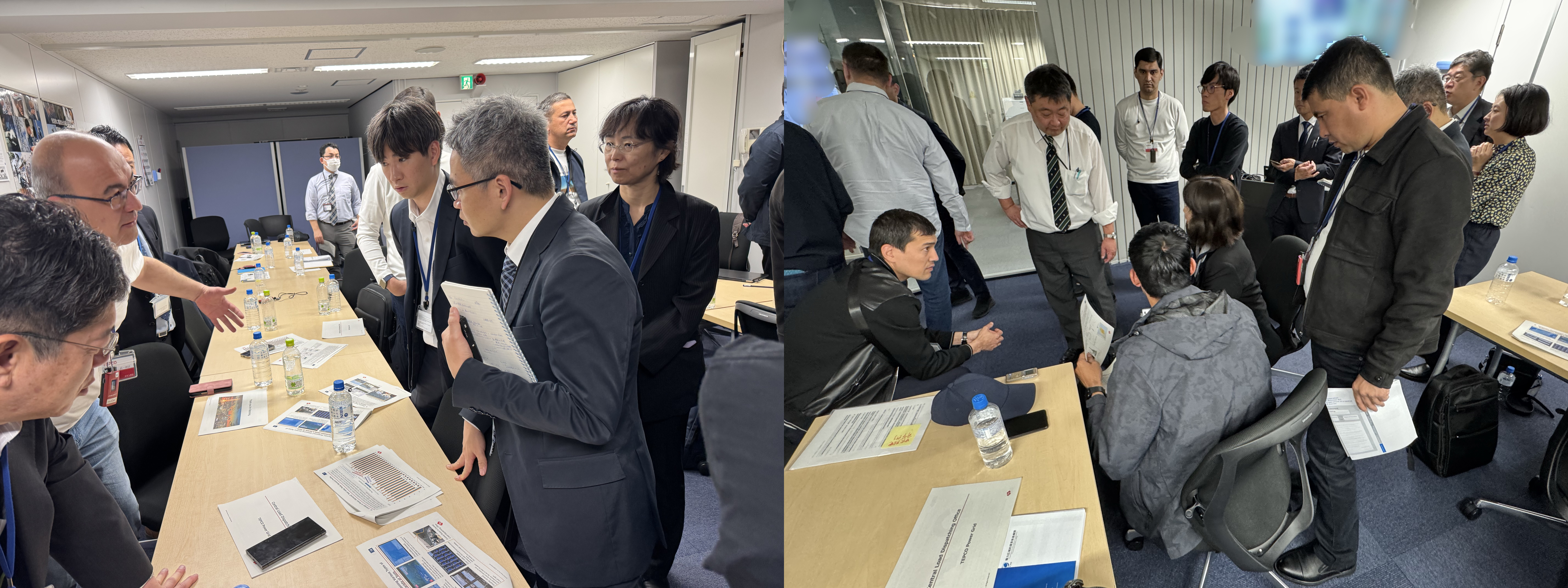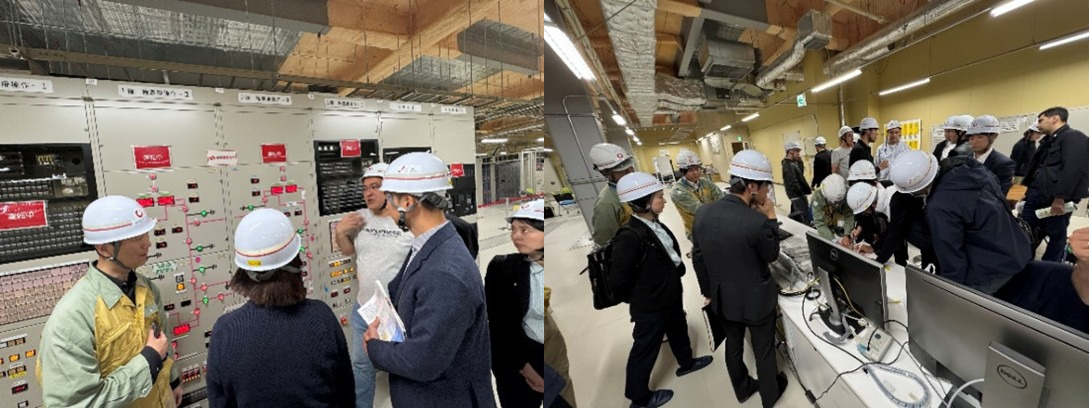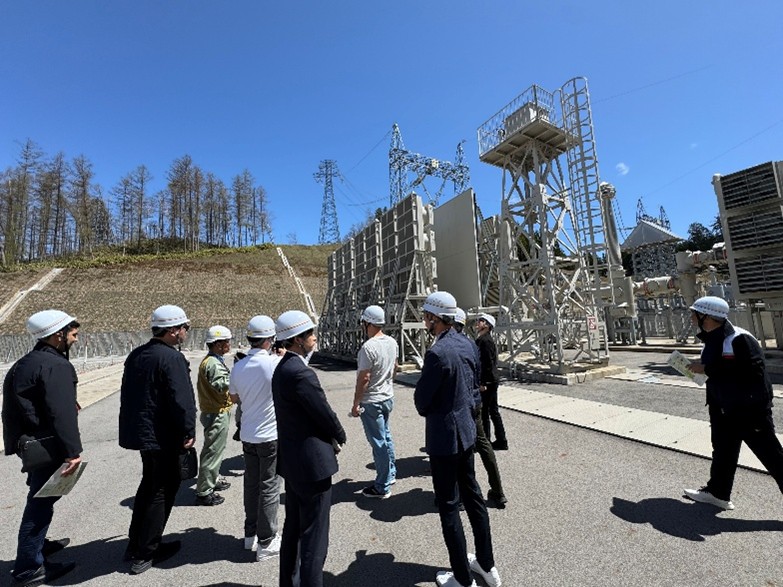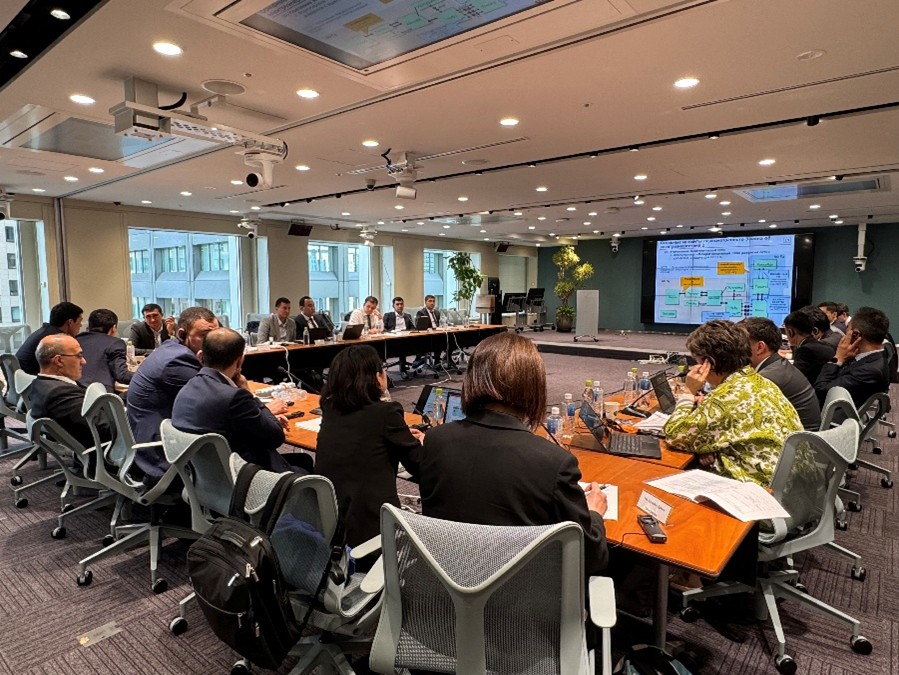By Akiko URAKAMI and Koji NISHIDA
Uzbekistan is on a path of ambitious energy sector transformation, aiming to integrate a significant amount of renewable energy and modernize its energy infrastructure to meet growing demand. Yet, like Japan, it faces the ever-present threat of natural hazards. How can a nation build a power system that is both clean and resilient?
To explore this question, the World Bank, with financial support from the Japan-World Bank Program for Mainstreaming Disaster Risk Management (DRM) in Developing Countries implemented by the Tokyo DRM Hub managed by the Global Facility for Disaster Reduction and Recovery (GFDRR), facilitated a knowledge exchange between Uzbekistan and Japan in April 2025. Over the course of a week, Uzbek policymakers and technical specialists participated in a Technical Knowledge Exchange on disaster resilience in the energy sector with Japanese and global experts.
"Our country is in Central Asia, limited in water resources and surrounded by land, requiring us to pump water to consumers, which needs stable electricity. My main task is to learn how Japan builds facilities to ensure continuous power supply." –Zafar Karimov, Head of Department for Coordination of Projects Under State Guarantee, Ministry of Investment, Industry and Trade, Uzbekistan

The Uzbek delegation actively participating in Q&A sessions at TEPCO Power Grid’s Central Load Dispatch Center. Credit: World Bank
Navigating the Bumpy Road of Market Reform
The exchange examined how Japan transitioned from regionally dominant utilities to market-based mechanisms, unbundling generation, transmission, and distribution. Professor Hideo Ishii of Waseda University explained the complexities of this transition, noting that while liberalization spurred efficiency, it also led to significant complications and a fragmented regulatory framework. This experience resonated with Uzbek delegates embarking on their own unbundling reforms. The takeaway was clear: market reform is vital, but it must be informed by international lessons —both successes and challenges.
"I learned how efficiently Japan's almost entirely privatized and liberalized energy market segments work. The lessons we are taking with us from Japan's experience would help Uzbekistan avoid some potential mistakes on its way to transitioning to wholesale and retail electricity markets." –Bahodir Amonov, Energy Specialist, World Bank Uzbekistan office
Discussions with the Agency for Natural Resources and Energy (ANRE) under Japan’s Ministry of Economy, Trade and Industry (METI) further highlighted the government's role as the driver of reform. “Japan's strategic shift towards long-term decarbonization”, approved by Japan's Cabinet and submitted to UNFCCC, and its “Long-term Master Plan for Grid Development (Japanese)” (2023), developed through expert deliberations by the Organization for Cross-regional Coordination of Transmission Operators (OCCTO) and the ANRE, are designed to achieve carbon neutrality by 2050, with twin goals of delivering clean energy and improving resilience against major earthquakes. This master plan requires approximately 6.0-7.9 trillion JPY in grid investments, the costs of which are largely borne by power consumers across the nation, facilitated by government efforts to streamline financing and ensure broad stakeholder participation.
Building a Grid That Bends but Doesn't Break
A major focus of the Technical Knowledge Exchange was power infrastructure resilience. Japanese utilities such as TEPCO Power Grid and Chubu Electric Power Grid shared invaluable lessons from major disasters, including the 2011 Great East Japan Earthquake and 2019 Typhoon Faxai. Proactive measures the utility companies have adopted include joint drills with municipal governments and Japan’s Self-Defense Forces and the use of drones for inspections.

Chubu Electric Power Grid Senior Manager Hiroyuki Hora, center, explaining operations at the Hida Converter Station. Credit: World Bank.
Site visits brought these concepts to life. At TEPCO Power Grid's Shin-Toyosu Underground Substation, delegates observed a massive facility that is protected from surface hazards to ensure stable electricity supply to Tokyo. The facility’s unmanned operations particularly impressed the delegation, as did the Hida Converter Station. This vital AC/DC interconnector, managing the frequency difference between eastern and western Japan, demonstrated resilience through design, to withstand extreme weather conditions like heavy snow. Operators shared features such as automatic power transfer to maintain grid stability during emergencies.
"From this tour, we gained a lot of very useful information, especially regarding methods for responding to extreme situations like natural hazards. We also learned a great deal about the automation of the energy system, which I believe will be extremely beneficial for us." – Shukhrat Nizanov, Senior Specialist of the Strategic Planning, Methodology and Licensing Division, Energy Market Development and Regulatory Agency Uzbekistan

The Uzbek delegation toured the DC transmission line connection point at the Hida Converter Station. Credit: World Bank
Digital tools underpinning resilience were also highlighted. Chubu Electric Power Grid showcased sophisticated systems like the Disaster Recovery Information Sharing System (DRISS) and a Grid Visualization System. These tools leverage extensive data to create a ‘digital twin’ - a virtual replica of the power grid. This digital twin enables operators to rapidly assess damage, simulate scenarios, and make informed decisions during emergencies, enhancing the speed and effectiveness of restoration efforts.
Powering the Future with Renewables and Smart Technology
With a national target of 54 percent renewable energy by 2030, Uzbekistan is exploring the challenges of integrating solar and wind power. The knowledge exchange featured Japan’s approaches to managing fluctuating output, including utilization of pumped hydro storage for balancing and the potential of battery energy storage systems.
At Waseda University, participants explored cutting-edge research on Virtual Power Plants (VPPs) and aggregating Distributed Energy Resources (DERs) —technologies that help optimize energy use across decentralized energy systems. The scale of Japan's Advanced Metering Infrastructure (AMI) rollout, which boasts the deployment of over 78.5 million smart meters, demonstrated the foundational digital layer needed for enabling Demand Response (DR) programs and integrating DERs more efficiently –both areas of strong interest for Uzbekistan.
METI also shared its policy stance on renewables. A key takeaway was its approach to curtailed renewables —electricity generated but not fed into the grid. Under Japan’s current policy, which transitioned to an unlimited and uncompensated curtailment rule around 2021, producers are generally not compensated for losses due to curtailed energy. This is based on the principle that generation should match demand —a valuable insight as Uzbekistan's market rules continue to evolve.
Forging Partnerships for a Resilient Future
Zafar Karimov from Uzbekistan’s Ministry of Investment, Industry and Trade, underscored Uzbekistan's rapid reform pace—including the unbundling process that began in 2019 with the splitting of the state-owned vertically integrated electricity utility. He also acknowledged the World Bank's leadership and support throughout this reform process.
The Uzbekistan delegation expressed deep gratitude for the World Bank's leadership and for the generous support received from Japan. METI reaffirmed Japan's commitment to supporting Uzbekistan's energy transition through public-private partnerships, highlighting areas of Japanese private sector involvement in Uzbekistan's grid.

The Uzbek delegation at a technical session hosted by the World Bank Tokyo DRM Hub. Credit: World Bank
Conclusion
This knowledge exchange provided the Uzbekistan delegation with actionable insights drawn from Japan's experience in building a power system resilient to natural hazards and capable of integrating high levels of renewable energy. By prioritizing in-depth discussions and showcasing real-world examples of advanced infrastructure, digital tools, and policy approaches, the exchange bridged theoretical knowledge and practical applications. This knowledge exchange stands as a testament to the value of international collaboration in tackling today’s most pressing energy challenges.
